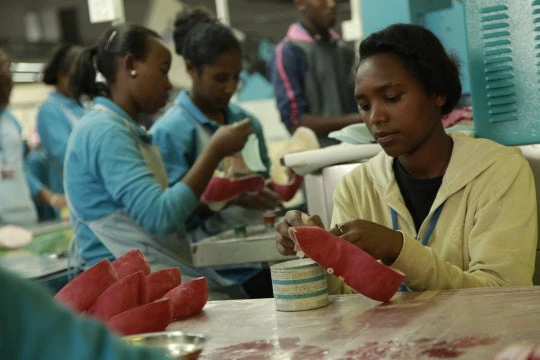
Technological changes and globalization have transformed the kind of skills required of workers in many sectors of the economy. Yet, with employment opportunities becoming more fluid, it has also become harder to predict the skill content of next year’s jobs than it was when Korea, Malaysia and Singapore industrialized through industrial and training policies.
It is in this context that skill gaps have entered public discourse. Employers around the world routinely report large skill gaps and warn of dire consequences for industrial competitiveness if they are not filled. Governments, from India to the United States, have taken up this call.
How do employers identify these "skill gaps"? What does this mean for skills delivery systems around the world? These questions were recently discussed at a conference at the World Bank Group in Washington on "New Growth Strategies." Here are some thoughts we presented to kick off that discussion.
That the skills gap narrative has become so prominent in recent years does not sit well, for five reasons.
- First, as the 2013 World Development Report reminds us, the world is overflowing with educated workers, many of whom are unemployed or underemployed.
- Second, the wage returns to secondary education have been falling in many countries. Secondary attainment is the education level most critical to the performance of production tasks in most internationally tradable sectors.
- Third, vocationally trained workers often do not find jobs.
- Fourth, employers often don’t act as if there is a skill gap: In many internationally competing sectors, they do not cast a wide net in search of skilled workers, and retention rates are low.
- Fifth, the high-employment tradable sectors are not very education-intensive. In most economies, workers in agriculture, fishing, forestry, textiles, garments, furniture, food processing and leather-goods production are among their country’s least educated.
So, why does this cacophony over skills gaps arise and how can we design skill-development systems that are robust to it?
The confusion arises because we have perverse incentives in place. When we ask employers to identify skill gaps, we do not usually ask them to bear, or even consider, the cost of training workers. This is much like asking them whether they prefer strawberries or strawberries covered in chocolate, without asking them to pay extra for the chocolate. They therefore routinely report a crippling shortage of chocolate. Yet, behind this strange exercise, there are some industries that are actually seriously skill constrained and there are other industries that are not skill constrained. The way we ask the question simply does not induce them to differentiate themselves.
Our objective in designing skill-development systems must be to ensure that this differentiation occurs. Otherwise, skill-intensive sectors will be hurt if they cannot access the skills they need, while workers who invest in skills for which there is not sufficient demand will not be able to recover the rather significant cost of those investments.
We will return to how to do this in a future post. For now, let’s think about what several firms really mean when they complain about skill gaps. Through many conversations with employers, trainers, workers and their families, we have come to the conclusion that they simply mean: “I cannot find suitable workers at wages and working conditions that I can afford.” In other words, their costs of production are high relative to market prices, squeezing their margins so that they can’t offer enough to attract good workers. As this squeeze could be relieved in many different ways, a firm complaining of skill gaps may in fact be telling us that they need something else.
Two simple examples will clarify. Indian garment firms often complain of serious skill gaps. And yet, learning to operate a sewing machine to industry standard takes only around 15 to 30 days. Machinery and materials to practice on are also cheap. Each additional year of secondary schooling earns only 2-percent returns for non-supervisory shop-floor workers. It is hard to see a skill gap here. On the other hand, a soon-to-be-released study by the Asian Development Bank shows that Indian garment firms are significantly hamstrung by their small size. Their difficulties result partly from trade restrictions, labor laws and bottlenecks in synthetic fiber and fabric markets. Dealing with these "other" problems should create more garment-related jobs than promoting skill development.
This is quite different for the automotive sector. In a World Bank project focused on improving firm productivity in the automotive sector, we learned that technical skills take longer to acquire; that employers place an emphasis on hiring and retaining skilled workers; and that employers often build in-firm career ladders. They continue to face some real challenges with the quality of pre-service training institutions: Among them, SME component suppliers complain of both the quantity and quality of workers. Fixing pre-service training at Technology Centers (TCs) or Industrial Training Institutes (ITIs) could be much more cost-effective, and could achieve scale benefits rather than training workers solely on the job, as some firms currently do. Our point is that firms in the automotive sector act as if there is a skill gap: They invest in building their own pre-service training institutes, developing supplier capacity, and forming alliances to transfer skills and technology locally and from international players. With ample workers interested in filling this bona fide skill gap, employers and government should work together to help them to do it.
The trick, it seems, is to figure out who needs chocolate enough to pay for it.
The blog was co-authored by Aashish Mehta (Associate Professor in the Global Studies Department at the University of California-Santa Barbara), Ivan Rossignol (Chief Technical Specialist at the World Bank Group), and Amit Dar (Director, Education Department at the World Bank Group).





Join the Conversation